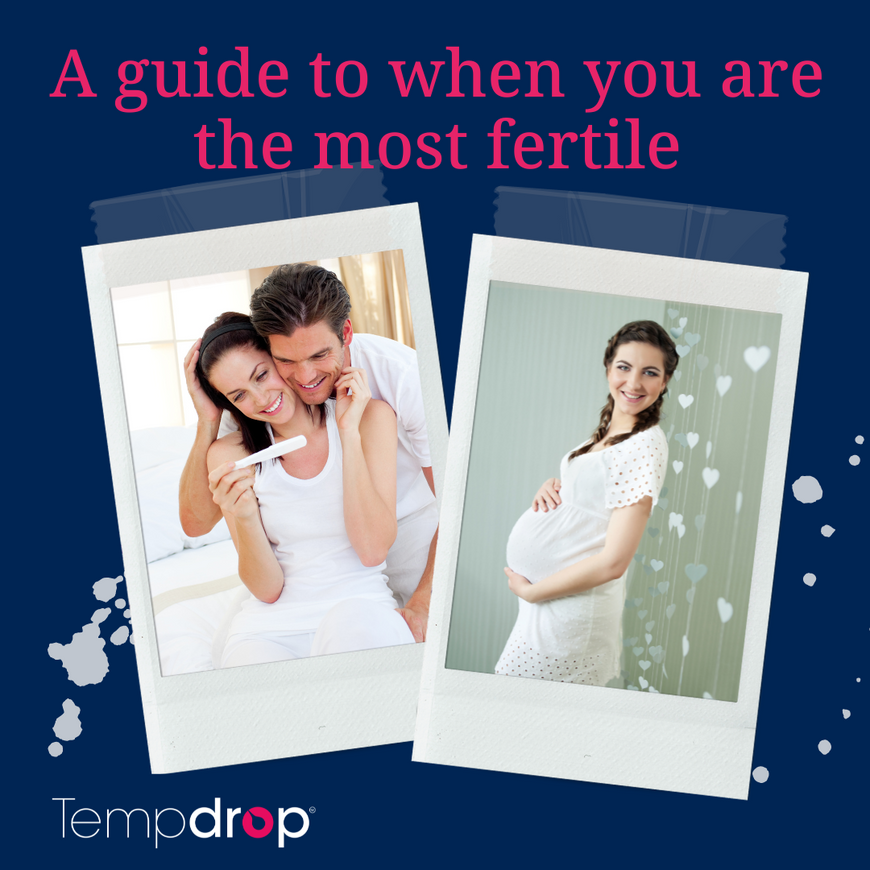Written by the Tempdrop Team
At times, the Trying To Conceive (TTC) journey can be isolating, especially if the road to pregnancy has been longer or more difficult than you had anticipated. Not only can it take a toll on your emotional health, it can also impact your relationships. One of our Tempdrop community described it like this - “With each passing month, disappointment grew, but I just outwardly carried on as normal.”

To feel less overwhelmed by their situation, many women find that the practice of charting can be grounding, bring clarity, and help them to feel in control of their fertility journey. By tracking your fertility biomarkers, such as sleep temperature and cervical mucus levels, not only do you maximize your chances of conception and identify when ovulation takes place, but you also gain essential insights about your hormone health that can help you troubleshoot potential fertility challenges.
So how does it work?
You might be wondering how you can track your fertility signs. Well first, tracking your basal body temperature (or sleeping temperature) enables you to confirm IF and when ovulation took place; then tracking cervical mucus (CM) lets you know in 'real-time' when the fertile window opens (the fertile window is the 5-7 days per cycle when sperm can stay alive in optimal conditions). CM also serves as a cross-check to confirm ovulation has actually occurred. This can seem a bit daunting at first, but Tempdrop makes this process simple with their all-in-one solution - a wearable sensor and a charting app with fertility predictions to help you identify the optimal time for conception.

By recording additional symptom data and tracking your menstrual cycle in the Tempdrop app, you can collect an additional layer of health data that can be used in conjunction with other tests. Some lab tests can only reveal so much, since your hormone levels change from day to day. Additionally, some doctors will have different ranges for what they consider “normal.” Whereas, a chart can give your practitioner insights and help them to diagnose potential reproductive health issues. Often, practitioners such as naturopaths, acupuncturists, or registered dieticians can read a fertility chart, and it offers a great place to start treating any potential barriers.
What might some of these barriers be?
Conception can only take place when we are ovulating, and ovulation happens only once every cycle. We are often led to believe that women ovulate on day 14 of their cycle and have a 28 day cycle but in reality you could be ovulating much earlier or much later in your cycle. For example, it's not uncommon for women with PCOS to experience cycles as long as 40 to 60 days, or even longer, in length. So knowing when you are ovulating is crucial when trying to conceive.
By charting you may also observe
- A lack of cervical mucus (CM) - both in quantity and quality. (CM is influenced by changing estrogen and progesterone levels, and is essential to nourish sperm).
- A short luteal phase (the time from confirmed ovulation to your period). An adequate luteal phase length indicates whether there are sufficient progesterone levels, necessary for ensuring conception and carrying a healthy pregnancy.
- A weak temperature shift, (you should see a clear rise in temperature when you have ovulated). If your temperatures hover close to the cover line, or have dips, it can also be an indicator of low progesterone.

As you identify the root cause of fertility challenges, you can work with your practitioner to make positive lifestyle changes and then use your chart data to track the impacts. Seeing (and feeling) the improvements of your menstrual cycle will be extremely satisfying and get you closer to your goal of pregnancy.
Tracking your fertility with Tempdrop is empowering! It enables you to advocate for your own health and puts you in control of the decisions needed, so you can have a positive experience on the road to pregnancy.
About Tempdrop - Tempdrop is a wearable basal body temperature sensor and charting app. The sensor is worn during sleep and combines smart sensors and algorithms to accurately measure and track sleeping temperature and data. The sensor is integrated with a charting app to deliver a complete solution. Its data offers an important piece to the fertility puzzle and can help women maximize their chances of pregnancy.

